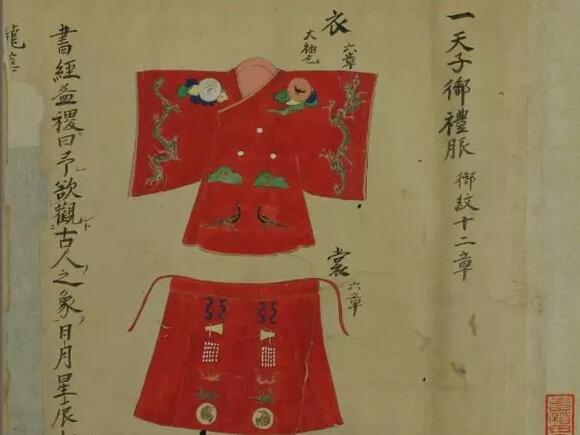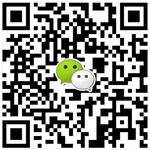唐朝服飾文化對(duì)諸多鄰國(guó)都有廣泛而又深刻的影響,比如日本和朝鮮等鄰國(guó)。本文著重介紹唐朝服飾對(duì)鄰國(guó)中的日本和朝鮮的影響。
Tang Dynasty clothing has a profound and extensive effect on numerous neighboring countries, such as Japan and North Korea. This article emphatically introduces the influence of Tang Dynasty clothing on Japan and North Korea.

唐朝某一時(shí)期的地圖
A map of the Tang Dynasty
唐朝服飾
對(duì)日本的影響
一、唐朝服飾對(duì)日本的影響:
The influence of Tang Dynasty clothing on Japan:
日本的和服是根據(jù)我國(guó)唐朝服裝改制的,因?yàn)槭菑奈覈?guó)江漸一帶“移植”過(guò)去的,所以又稱之為“吳服”。雖然后來(lái)日本人又對(duì)和服進(jìn)行了一些改造,但依然保留著我國(guó)古代服裝的特點(diǎn)。
The kimono was adapted from the costume of Tang Dynasty, which was also called “Wu Clothing”. Because it was “transplanted” from Jiangsu and Zhejiang provinces, China. Although afterwards the Japanese made some alterations on the kimono, it remains the characteristics of ancient Chinese clothing.

(一) 款式 Style
中國(guó)古代紡織技術(shù)發(fā)達(dá),絲綢乃是當(dāng)時(shí)江浙地區(qū)的代表性產(chǎn)物。據(jù)史書(shū)記載,日本天皇到中國(guó)去請(qǐng)專門(mén)技術(shù)人員教給日本養(yǎng)蠶絲織技術(shù)。日本最初的衣服面料以麻為主,所以隨著紡織技術(shù)的發(fā)展,和服面料更加豐富,給和服款式的設(shè)計(jì)也提供了便利。
The silk was the representative product in Jiangsu and Zhejiang provinces, which reflects that the textile technique level was high in the ancient China. According to historical records,Japan’s emperor once went to China to invite the professionals to teach the Japanese how to rear silkworms and weave silk. Japanese original clothing material was linen. Consequently, with the development of the textile technology, the clothing material of kimono became more abundant, which provided convenience for the style design of kimono.
公元8世紀(jì),中國(guó)正值盛唐時(shí)期(日本平安時(shí)代)。隨著中日經(jīng)濟(jì)文化的交流,中國(guó)的唐裝傳入日本。日本天皇下詔宣布,全國(guó)不論男女老少穿衣服都要以唐朝的模式進(jìn)行。“日本人的穿衣習(xí)慣由原來(lái)的左衽變?yōu)橛荫臶rèn],也是由這個(gè)時(shí)期開(kāi)始的。”【1】日本大和民族曾專門(mén)制定法律規(guī)定制作衣服要仿照中國(guó)服裝式樣,決定制衣用冠都要仿照中國(guó)確定的著裝制度。
In the eighth century, China was in the glorious age of Tang Dynasty while Japan was in Heian Period. In the communication process of economy and culture between China and Japan, the Tang clothing was introduced into Japan. The emperor of Japan declared in the imperial decree that human beings regardless of age and gender must dress in Tang style. Japanese dressing habit, which changed from left into right front piece, also began at this period. In addition, Yamato people even drafted the special law to regulate that making clothes should follow the Tang style and institution.

唐朝男士服飾
The men's clothing in Tang Dynasty
(二) 花紋與色彩 Pattern and color
日本和服的花紋與我國(guó)唐朝服飾花紋有著歷史淵源。當(dāng)時(shí)和服的名稱,又叫“唐草“唐花“唐錦,足以見(jiàn)其緊密的聯(lián)系。日本古代的服裝很單調(diào)。隨著中日文化的交流, 中國(guó)的服飾文化傳到日本,給日本服飾注入了新的活力。“和服上有些圖案,明顯受到中國(guó)傳統(tǒng)思想影響,如平安時(shí)代天皇的冕服,上衣繪有日月星辰,龍鳳虎猿,御褲上半黑色的花紋,是受《禮記》的影響;有些圖案,是在中國(guó)圖案的基礎(chǔ)上加工而成,如云鶴、波濤、菱、銅和蔓草等圖案,多在我國(guó)唐朝傳入日本,平安時(shí)代的藝人在此基礎(chǔ)上予以加工而成”【2】。
The pattern of the kimono has a historical origin with the pattern of Tang Dynasty clothing. At that time, kimono was also named “Tang grass”, “Tang flower” and “Tang brocade”, which indeed indicates the close connection between the pattern of the kimono and the pattern of Tang Dynasty clothing. The ancient Japanese clothing was monotonous. But with the cultural communication between the two countries, the clothing culture of Tang Dynasty infused new energy to culture of Japanese clothing. Therefore, there are some patterns on the kimono that are obviously influenced by traditional Chinese thought. Myeonbok of Japan's emperor in Heian Period is a good example, which is influenced by Book of Rites. The craftsmen in Heian Period processed some patterns based on Chinese patterns, such as crane, wave, water chestnut, copper and creeping weed.

日本天皇冕服
Myeonbok of Japan's emperor
(三) 配飾 Accessories
日本和服的配飾中,很多都有唐朝的影子。以鞋襪為例,日本的《大寶律令》中,除了對(duì)服裝款式做了明確的規(guī)定,鞋子也有明確的規(guī)定。不同階層的人穿不同款式的鞋子,反映了森嚴(yán)的等級(jí)制度。“和服發(fā)展到后來(lái)鞋襪有了固定的模式。鞋子為木屐,襪子為分指襪。其實(shí)木屐在
中國(guó)有著悠久的歷史,在文獻(xiàn)資料中有很多地方做過(guò)描述。”【3】古樂(lè)府詩(shī)(唐以前的樂(lè)府詩(shī))中有“黃桑柘屐蒲子履,中央有絲兩頭細(xì)”,很好的對(duì)木屐做了詮釋。
The accessories of the kimono have a lot characteristics in common with Tang Dynasty clothing. Take shoes and socks as an example, in addition to making clear regulations on clothing styles, there are also clear regulations on shoes in Taiho code (the basic code of ancient Japan). People of different classes wear different styles of shoes, which reflects the rigid hierarchy. With the development of the kimono, shoes and socks have their fixed patterns, shoes are getas and socks are split. However, geta has a long history in China with numerous descriptions in literature. For example, ancient Yuefu poems (poems of the dynasties before Tang Dynasty) have made excellent explanatory notes.

日本木屐
Japanese getas
總之, 唐朝時(shí)期,唐朝服飾文化對(duì)日本產(chǎn)生了深遠(yuǎn)的影響,深刻地影響了日本民族服飾文化的產(chǎn)生與發(fā)展。
In a word, the costume culture of Tang Dynasty had a profound influence on Japan, and deeply affected the emergence and development of Japanese national costume culture.
唐朝服飾
對(duì)朝鮮的影響
二、唐朝服飾對(duì)朝鮮的影響:
The influence of Tang Dynasty clothing on North Korea:
朝鮮服也從形式上承繼了唐服的長(zhǎng)處。唐裝襦裙線條柔長(zhǎng),十分優(yōu)美自如,用料主要是絲織品,因此它的衣物以"軟"和"飄柔"著稱。
Korean clothing also formally inherited the advantages of Tang clothing. Served Ru(Tang clothing) have long soft lines and are very graceful and free, which are mainly made from silk. Therefore, its clothing is famous for softy.

朝鮮服 Korean clothing
直到今日,在中國(guó)東鄰地區(qū)的一些國(guó)家,如日本、朝鮮等地,仍保留著中國(guó)傳統(tǒng)的服制。
Until today, some countries in China's eastern neighborhood, such as Japan and Korea, still maintain the traditional Chinese clothing system.
- 下一篇: 唐朝服飾真的奔放嗎
- 上一篇: 美輪美奐的唐代服飾圖案



